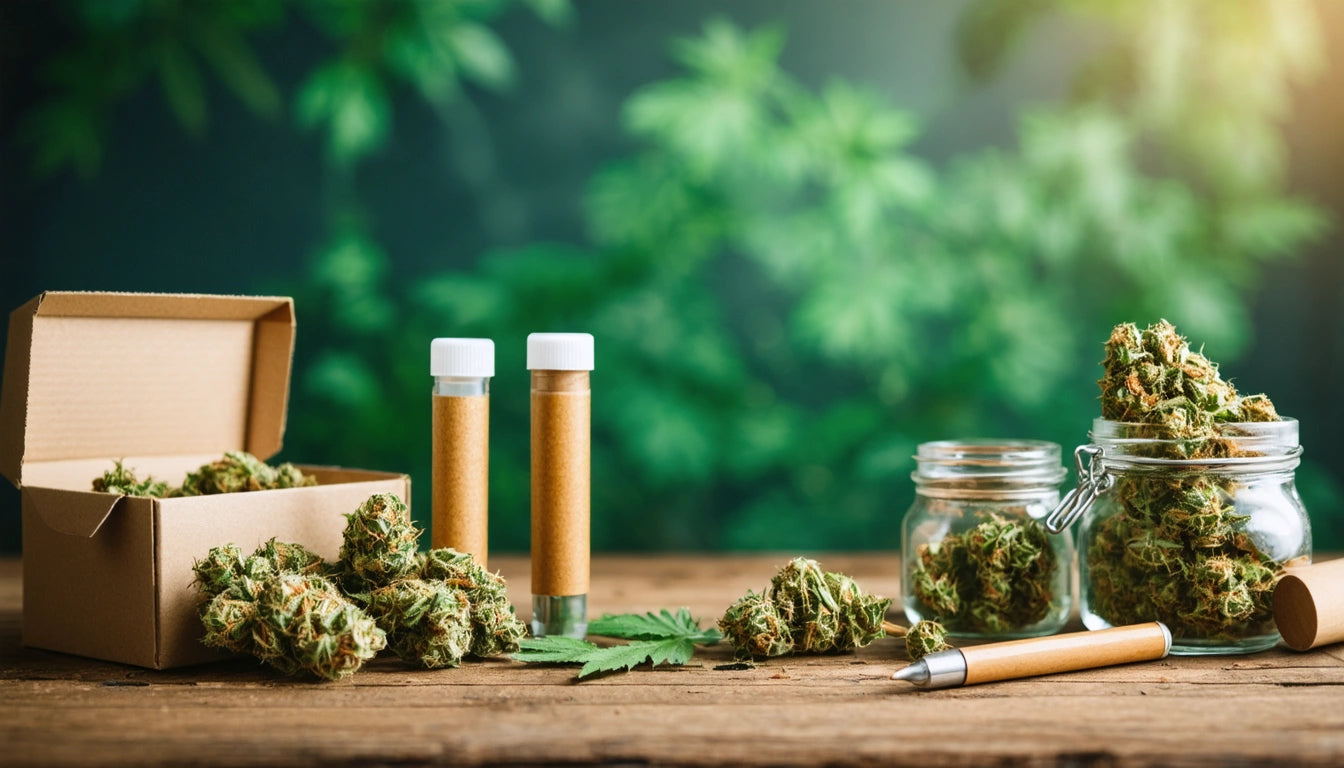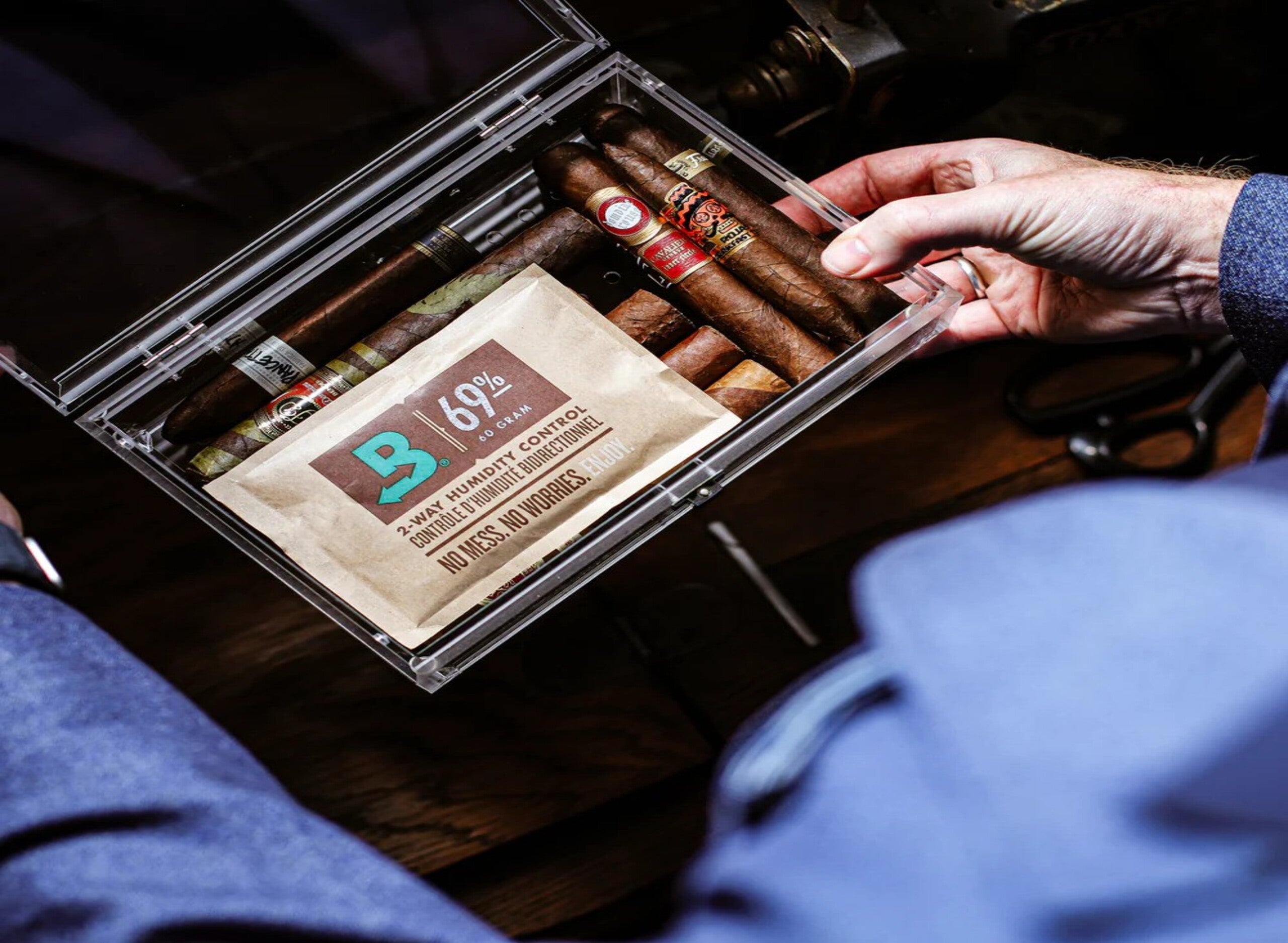Table of Contents
In the cannabis industry, maintaining product integrity from production to consumption presents unique challenges. Among these, humidity control stands out as a critical factor, particularly for pre-rolled products. Proper moisture management affects everything from flavor and potency to compliance and shelf life, making it a cornerstone of effective pre-roll packaging strategies.
The Humidity-Quality Connection for Pre-Rolls
Pre-rolls are particularly susceptible to humidity fluctuations. Too much moisture creates an environment where mold and mildew thrive, potentially introducing harmful contaminants. Conversely, excessively dry conditions cause cannabis to become brittle, leading to product degradation and a harsh smoking experience.
The ideal relative humidity (RH) range for cannabis pre-rolls typically falls between 59% and 63%. Within this range, terpenes remain stable, potency is preserved, and the smoking experience remains consistent. According to industry best practices for pre-roll freshness, maintaining this optimal humidity zone can extend shelf life by up to 6 months.
Effective Humidity Control Methods in Pre-Roll Packaging
Humidity Packs and Inserts
Two-way humidity control packs have revolutionized cannabis packaging. These small sachets contain specially formulated salts and water that either release or absorb moisture to maintain a specific RH level. For pre-rolls, 62% RH packs are commonly used to create ideal storage conditions.
Airtight Sealing Technologies
Effective moisture control begins with proper sealing. Hermetic seals prevent external humidity from affecting the product while retaining the carefully calibrated internal environment. Glass and plastic tubes offer different benefits in this regard, with glass providing superior airtight properties but at a higher cost point.
Material Selection for Optimal Moisture Management
The packaging material itself plays a crucial role in humidity management. Options include:
- Glass containers: Offer excellent moisture barriers but add weight and breakage concerns
- High-barrier plastics: Provide good moisture protection with lighter weight
- Metal tins: Deliver superior protection against both light and humidity
- Multi-layer films: Combine different materials to create customized barrier properties
When selecting materials, manufacturers must balance moisture protection with other considerations like sustainability and cost-effectiveness. For multi-packs, different considerations apply compared to single pre-roll packaging, as outlined in this comparison of packaging options.
Regulatory Compliance and Humidity Control
Beyond quality preservation, humidity control intersects with regulatory requirements. Moisture-related degradation can affect labeling accuracy, particularly regarding potency claims. If THC content diminishes due to poor humidity control, products may fall out of compliance with stated potency ranges.
Additionally, proper humidity management helps prevent mold growth, which could trigger failed microbial testing. According to safety guidelines for controlled substances, packaging must not only prevent child access but also maintain product integrity throughout its shelf life, which includes moisture control considerations.
How Humidity Affects Consumer Experience
The consumer experience is directly influenced by humidity control in several ways:
Flavor Preservation
Terpenes, the aromatic compounds responsible for cannabis flavor and effects, are highly volatile and sensitive to environmental conditions. Proper humidity levels help preserve these compounds, maintaining the intended flavor profile. Studies on consumer perception indicate that flavor consistency significantly impacts brand loyalty and repeat purchases.
Burn Quality
Humidity directly affects how evenly and smoothly a pre-roll burns. Overly dry cannabis burns too quickly and harshly, while excessively humid product may burn unevenly or go out repeatedly. Both scenarios lead to poor user experiences and potential brand damage.
Perceived Freshness
When consumers open packaging that has maintained optimal humidity, the sensory experience immediately communicates quality and freshness. This perception begins with the initial aroma release upon opening and continues through consumption.
Future Innovations in Humidity-Controlled Packaging
The cannabis industry continues to evolve, with several emerging technologies addressing humidity control:
Smart packaging with humidity indicators allows consumers to verify product freshness visually. More advanced solutions include QR codes linking to real-time humidity tracking throughout the supply chain. These innovations align with broader trends in luxury pre-roll packaging, where premium experiences demand premium preservation methods.
Biodegradable humidity control solutions are also emerging, addressing the intersection of moisture management and sustainability concerns. These innovations allow brands to maintain product integrity while reducing environmental impact.
As the pre-roll market matures, humidity control will likely become a key differentiator between premium and standard offerings. Brands that master this aspect of packaging science position themselves for superior product consistency, regulatory compliance, and consumer satisfaction, creating a competitive advantage in an increasingly crowded marketplace.











Leave a comment
All comments are moderated before being published.
This site is protected by hCaptcha and the hCaptcha Privacy Policy and Terms of Service apply.